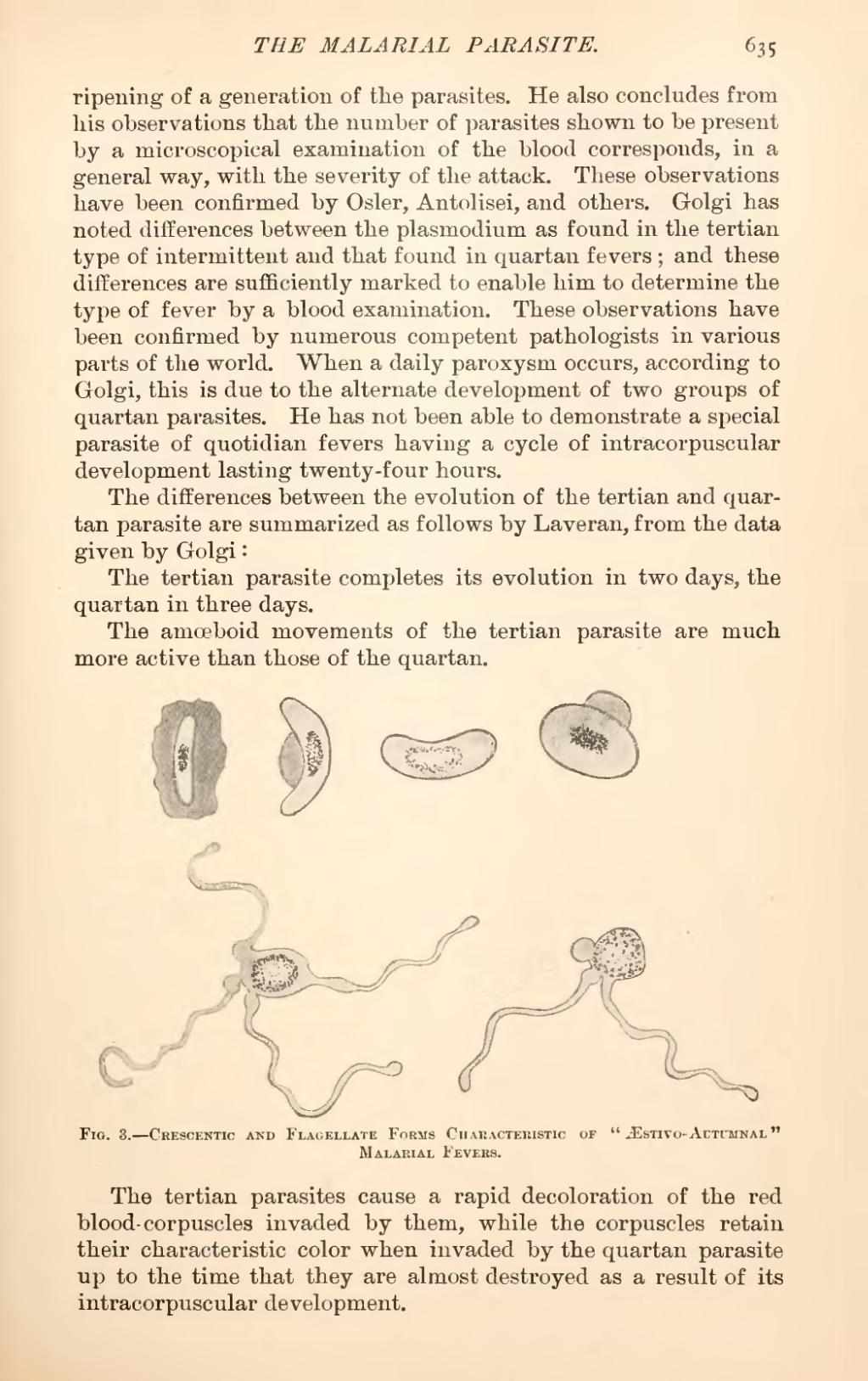ripening of a generation of the parasites. He also concludes from his observations that the number of parasites shown to be present by a microscopical examination of the blood corresponds, in a general way, with the severity of the attack. These observations have been confirmed by Osier, Antolisei, and others. Golgi has noted differences between the plasmodium as found in the tertian type of intermittent and that found in quartan fevers; and these differences are sufficiently marked to enable him to determine the type of fever by a blood examination. These observations have been confirmed by numerous competent pathologists in various parts of the world. When a daily paroxysm occurs, according to Golgi, this is due to the alternate development of two groups of quartan parasites. He has not been able to demonstrate a special parasite of quotidian fevers having a cycle of intracorpuscular development lasting twenty-four hours.
The differences between the evolution of the tertian and quartan parasite are summarized as follows by Laveran, from the data given by Golgi:
The tertian parasite completes its evolution in two days, the quartan in three days.
The amœboid movements of the tertian parasite are much more active than those of the quartan.

Fig. 3.—Crescentic and Flagellate Forms Characteristic of "Æstivo-Autumnal" Malarial Fevers.
The tertian parasites cause a rapid decoloration of the red blood-corpuscles invaded by them, while the corpuscles retain their characteristic color when invaded by the quartan parasite up to the time that they are almost destroyed as a result of its intracorpuscular development.
